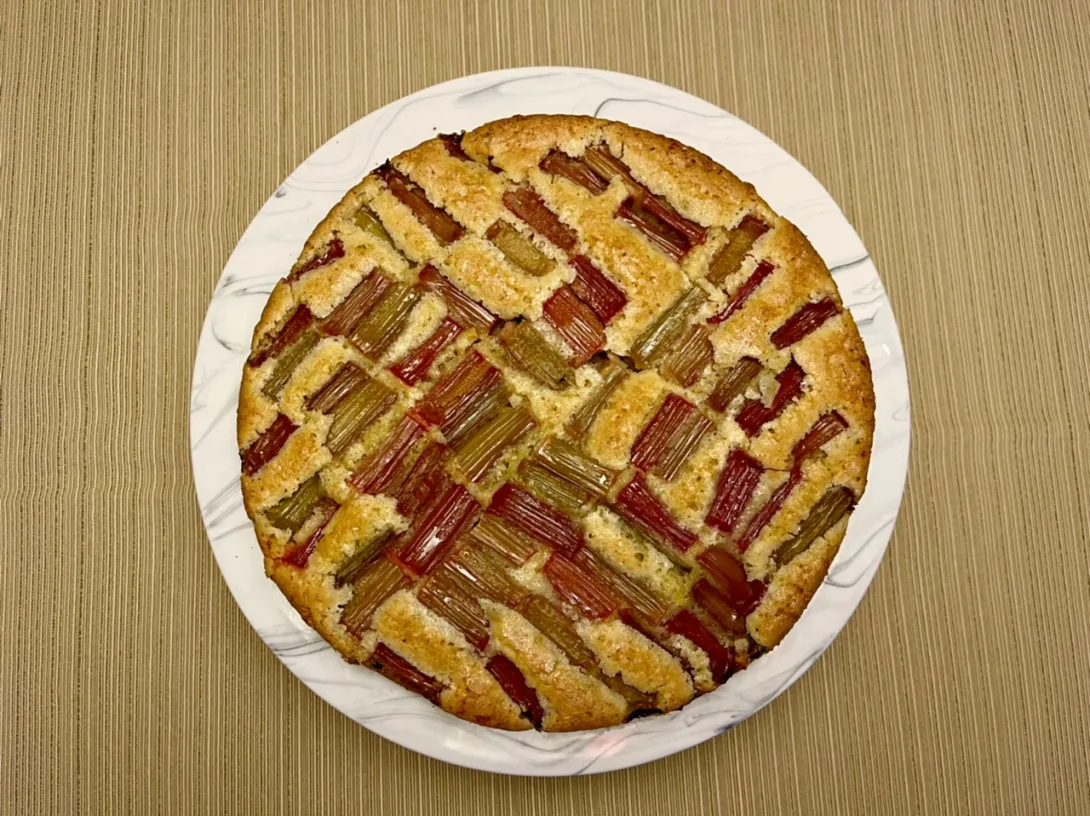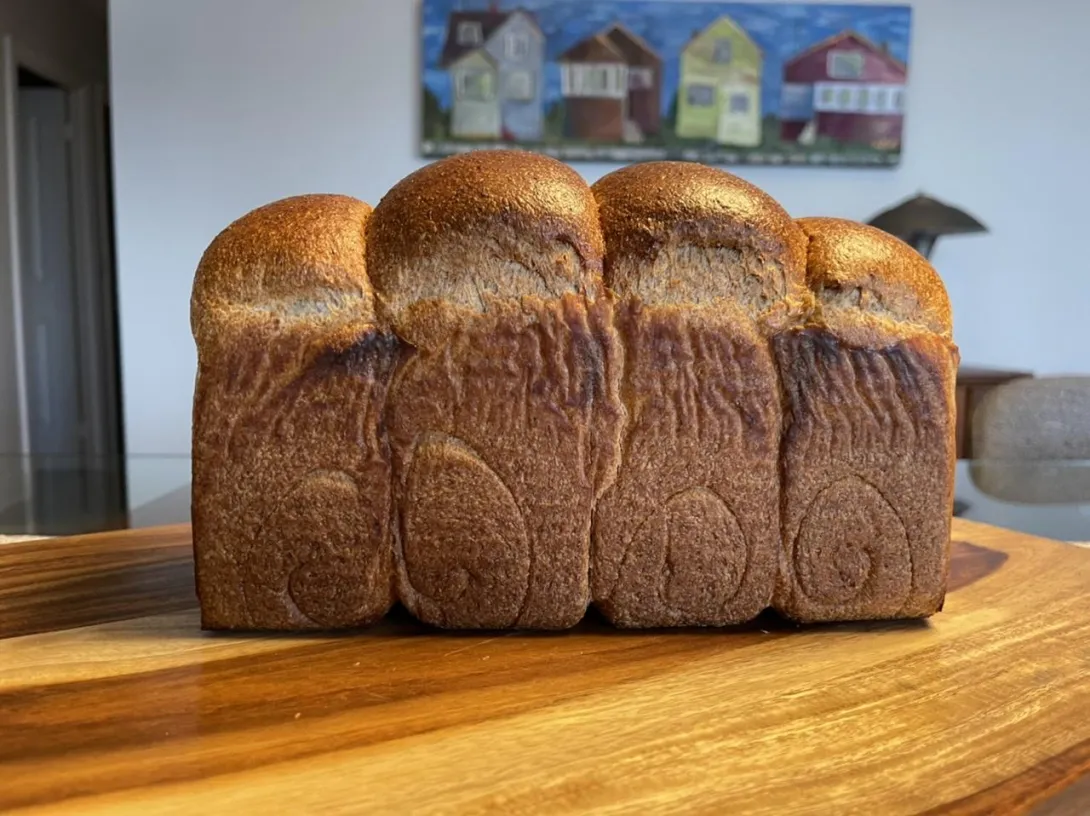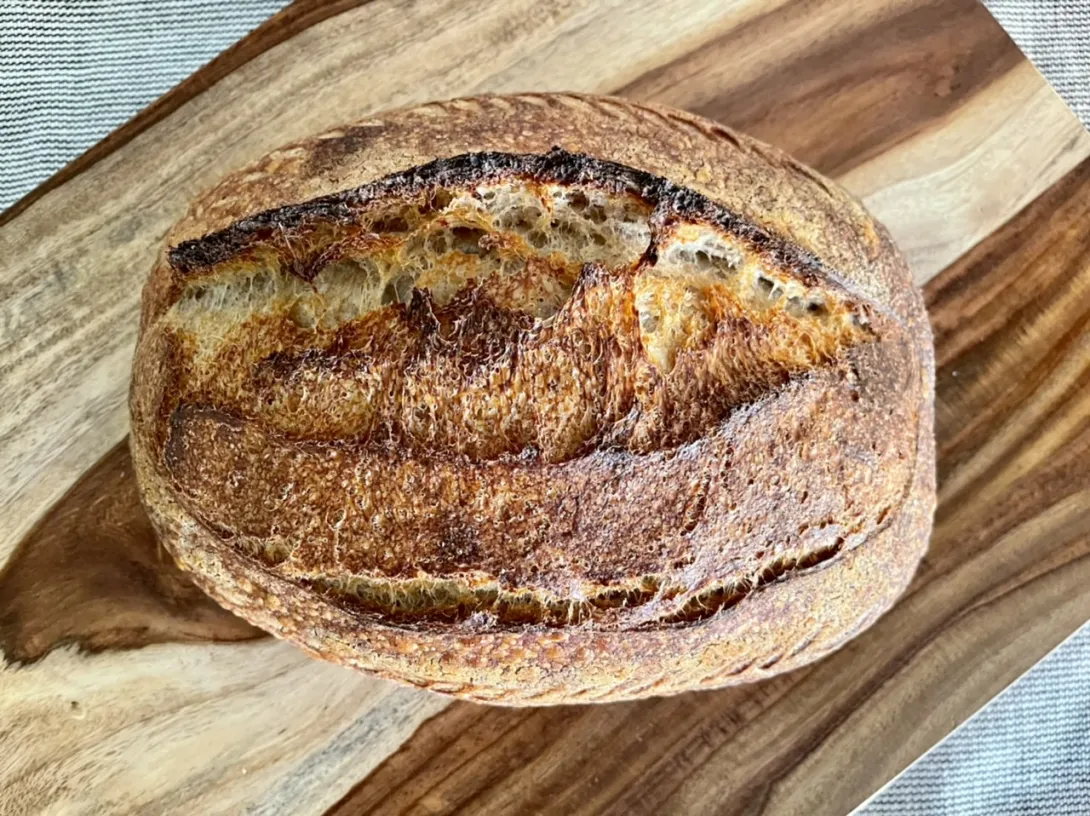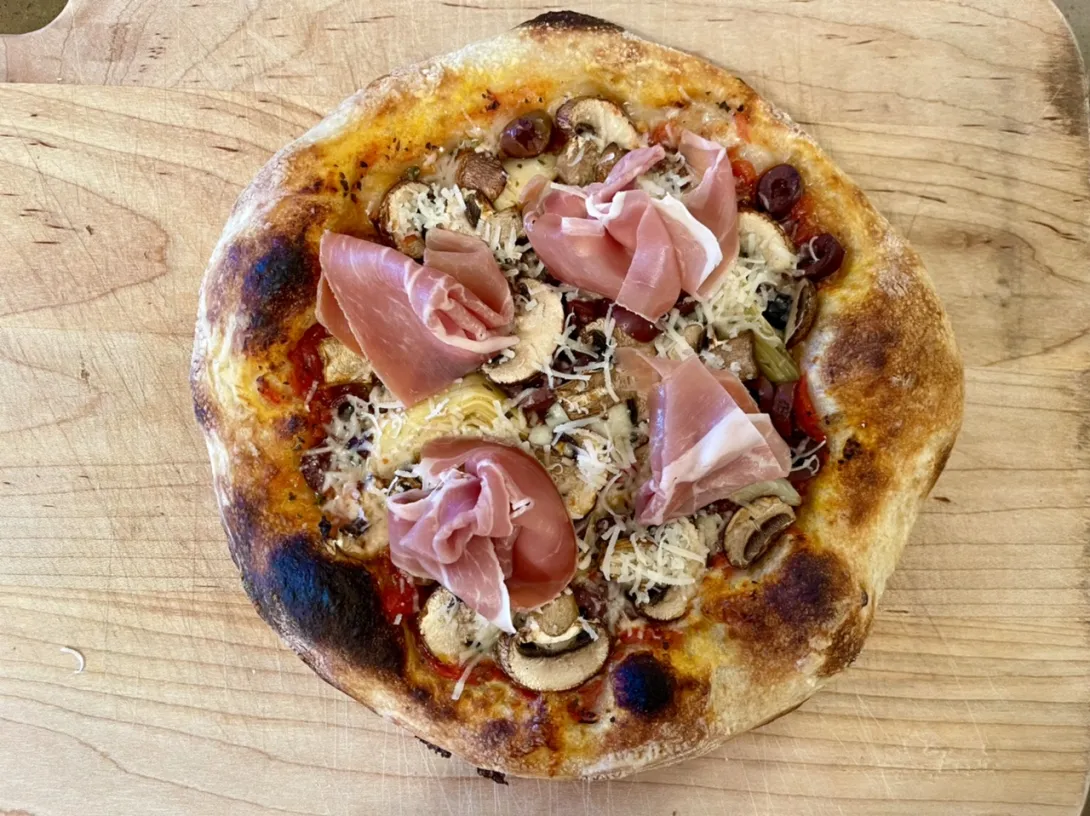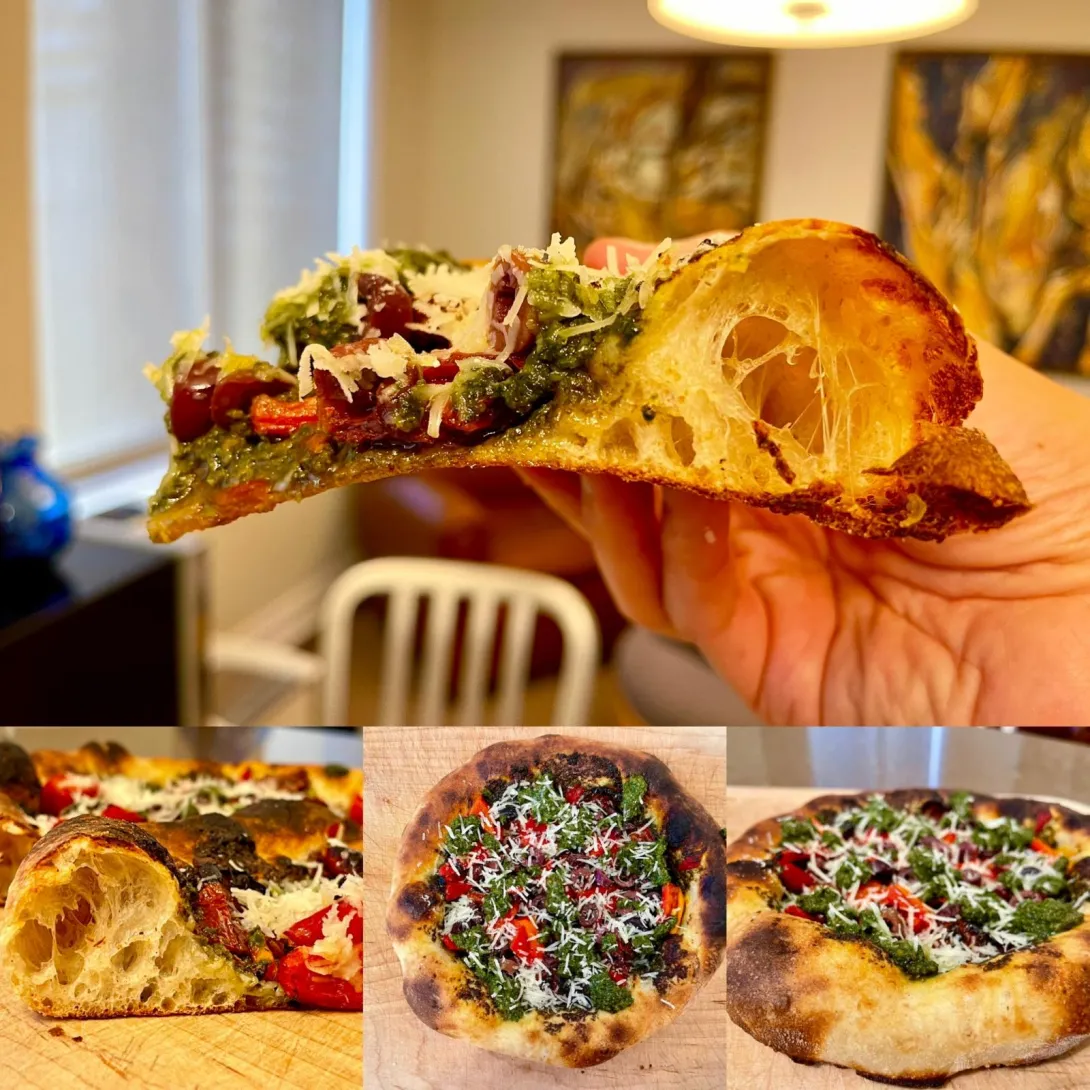100% Stoneground Organic Whole Wheat Sourdough 90% Hydration
This is my second bake using the method I described in my last bake of 100% whole wheat. In short, I sift out the larger flakes of bran with a #40 sieve, that bran gets scalded and allowed to cool in the fridge overnight while the levain ferments. In the morning the dough is mixed and the gluten is developed before adding the bran. The major difference with this bake is that I increased the hydration to 90%. Despite that I believe that this flour could still take even more which I’ll do next time.
